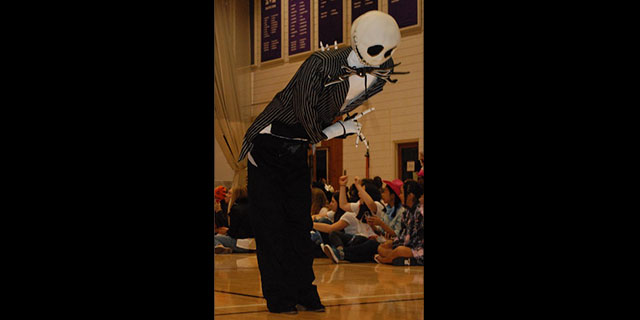
Shira ’15 says that she remembers the moment vividly. On Grandparents’ Day eight years ago, when Shira was in third grade, her teacher assigned her and three of her friends the task of painting a “D” for the banner that would hang across the room. As her friends argued over what color to paint the letter, Shira felt confused. “What other color could the “D” be but green?” she thought. When she mentioned this to her classmates, however, they told Shira that she was “weird” and that they didn’t know what she was talking about. It was at that moment that Shira realized that she wasn’t quite like everyone else.
Shira’s experience is similar to the experiences of many people who have synesthesia, a condition in which the activation of one sense triggers the activation of another, unrelated sense, according to the Synesthesia Project website. The most common form of synesthesia is grapheme-color synesthesia, in which a person sees letters and numbers as having specific colors. Though some forms of the condition are more prevalent than others, over 60 varieties of synesthesia have been documented. Other types include seeing certain colors when hearing a sound or touching a surface, perceiving a taste after reading a certain word, or associating personalities with letters or numbers.
Most synesthetes don’t realize that they perceive the world differently than others do, causing many to undergo experiences like Shira’s. After that day in third grade, Shira, who associates letters, numbers and music with colors, kept her synesthesia to herself.
“I literally shut up about it for so long; I just thought it was something that made me weird… I didn’t let myself get teased about it because I never talked about it,” she said.
Though she knew she was different, Shira didn’t comprehend that what she was experiencing was synesthesia until she started to do research on the topic a few years later. Similarly, Jane ’15 said she realized that her condition had a name around 9th grade, though she had discovered that she was different from her classmates in first grade, after she got upset that the “J” on the alphabet chart was the wrong color.
“Years later I was in a psychology class and they were like ‘Synesthesia is a thing,’ and I was like ‘Oh my god, that’s what I have!’” Jane explained.
The fact that many people do not realize they have synesthesia accounts for the uncertainty in statistics that report the percent of the population who has this condition. The Synesthesia Project cites that estimates of people with synesthesia range from between one out of every 100,000 people to one out of every 5,000. Dr. Veronica Gross, a psychology lecturer at Curry College who has done research on synesthesia, added that a lack of willingness to discuss one’s synesthesia also contributes to the unreliable numbers.
“[Teenagers] criticize people who are different, and as a result, a kid who might have been enjoying his or her synesthesia at seven or eight years old says something when they’re 10, their friends turn on them, and synesthesia vanishes into a corner of their mind,” Gross explained.
Jane, who has grapheme-color synesthesia and aura synesthesia, in which she perceives each individual as having a certain color, also said that she never spoke much about her synesthesia, but not because she felt apprehensive of her peers’ comments.
“I just never really brought it up because… I thought it was just sort of normal to associate stuff with colors, and it just never seemed like that big a deal,” she said.
Sasha ’15, who says she associates colors with numbers and days of the week but is unsure whether she has synesthesia, agreed.
“When people are talking about [synesthesia], I occasionally mention it, but since I’ve not ever been diagnosed with it, it’s not something I tend to talk that much about or really publicize,” she said.
Research on synesthesia has steadily increased since the advent of the cognitive revolution in the 1980s. Gross acknowledged that, while interest in synesthesia has grown significantly, research is still being conducted on a relatively small scale due to its time-consuming nature, limited funding and difficulty in recruiting people for tests.
“I get a number of emails a week saying ‘Hi, I’d like to participate,’ but if this person is in Montana, or in Spain, they’re not going to be able to come to a lab and take any of my tests without significant monetary output on one of our sides,” Gross said.
Some synesthetes report experiencing difficulty with certain activities or subjects. Shira said that her synesthesia made learning simple math concepts, such as the times tables, very difficult and that reading still takes her longer than it does for others.
“It’s like a third step in processing, because you know when you read you visualize the shape of the letter… [for me], the color is more prominent,” she said.
According to Gross, however, current research does not support a correlation between synesthesia and learning difficulties, and some people, such as Jane and Sasha, say that their synesthesia does not interfere with daily tasks.
“It doesn’t get in the way of my life at all… so I’ve never felt the need to do more research on [synesthesia],” Sasha said.
Additionally, some synesthetes find that their synesthesia helps them with other tasks. Both Jane and Shira said that memorizing formulas or phone numbers is easier for them than it is for other people.
“I’ve more used [my synesthesia] for my advantage in a creative aspect; it’s inspired a lot of my writing,” Shira explained.






